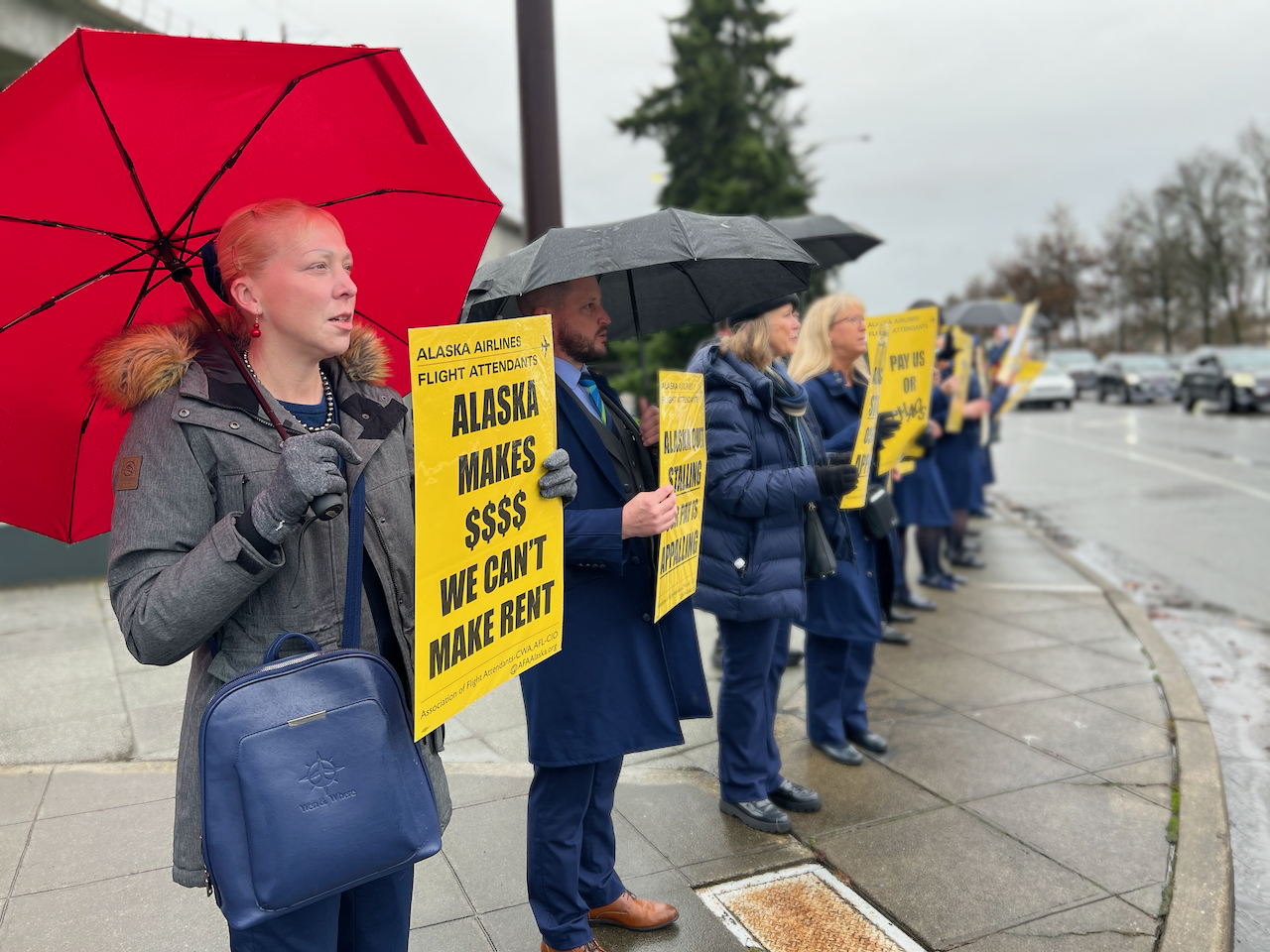Flight Attendants Weigh Strike as Frustrations With U.S. Airlines Mount

Skift Take
Alaska Airlines’ flight attendants union voted overwhelmingly to authorize a strike on Tuesday, the latest in a string of rising tensions between U.S. cabin crews and airline management.
Of the flight attendants that participated in the vote, 99.48% of them decided in favor of authorizing a strike. The last time Alaska flight attendants went on strike was in 1993.
“There’s no excuse: Alaska management has the money to buy another airline, they certainly have the money to invest in Flight Attendants,” said Jeffrey Peterson, the president of the Association of Flight Attendants’ Alaska chapter, referencing Alaska's proposed purchase of Hawaiian Airlines.
“We have a simple message for management: Pay us, or CHAOS!,” Peterson continued, referring to a strategy called “Create Havoc Around Our System,” which involves targeted strikes on a few flights.
Alaska’s flight attendants are also not alone in their vote to authorize a strike — flight attendants and American and Southwest have done the same.
The vote comes as thousands of flight attendants picketed at dozens of airports across the U.S., demanding better pay and working conditions.
“Flight Attendants are fighting corporate greed and demanding our jobs make it possible to live a good life,” said Sara Nelson, the president of the AFA.
Despite the vote, Alaska flight attendants cannot immediately strike. Since airline employees are covered under the Railway Labor Act, there first needs to be a release from mediation, then a 30-day “cooling off” period before flight attendants can formally strike. Each step can take several months, and President Biden also has the ability to intervene to stop the strike.
So, the vote to strike won’t have any immediate impact on travel, but if the flight attendants get through those next steps, then strikes could lead to hundreds of cancellations and delays.
Stagnant Pay as Pilots Receive Big Pay Raises
Since the pandemic, flight attendants have reported feeling burned out. They served on the front lines of the pandemic, dealt with a sharp rise in unruly passengers, worked on packed planes and faced staffing shortages.
One of the major sore points for flight attendants has been their compensation. Flight attendants make an average of $67,110, according to the Bureau of Labor Statistics. That pay has stayed around the same even as overall inflation has driven prices 18% higher than 2019. Negotiations between flight attendants and management have stalled for years.
Another issue for flight attendants has been the structure of their compensation. Flight attendants are only paid for their time inside the plane — they are not paid for their work on the ground or for boarding.
Adding salt to the wound is that pilots won big pay raises in the past year. United Airlines offered its pilots 40% pay increases; American Airlines gave 46% raises; Delta Air Lines gave a 34% raise; and Southwest gave pilots a nearly 50% pay increase.
“We are tired of waiting,” said Julie Hedrick, the president of the Association of Professional Flight Attendants, a union that represents flight attendants at American, during a town hall in September.





